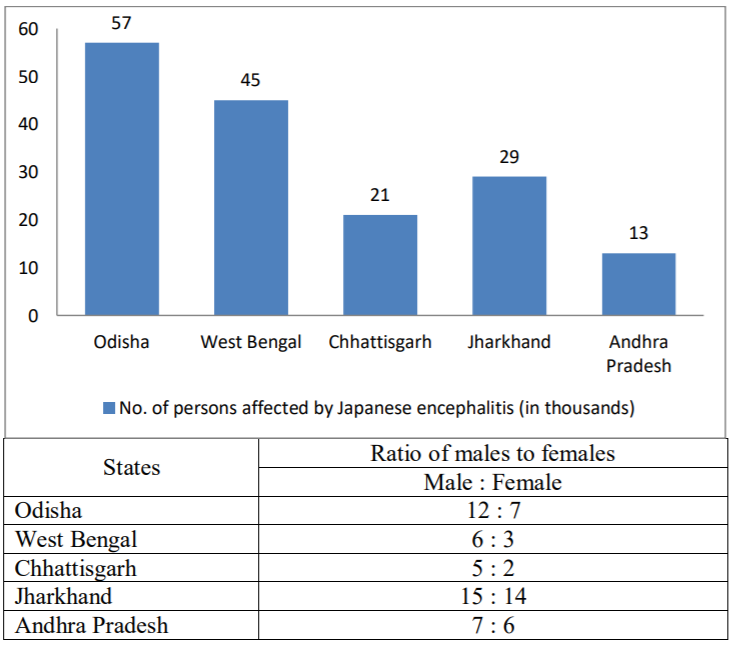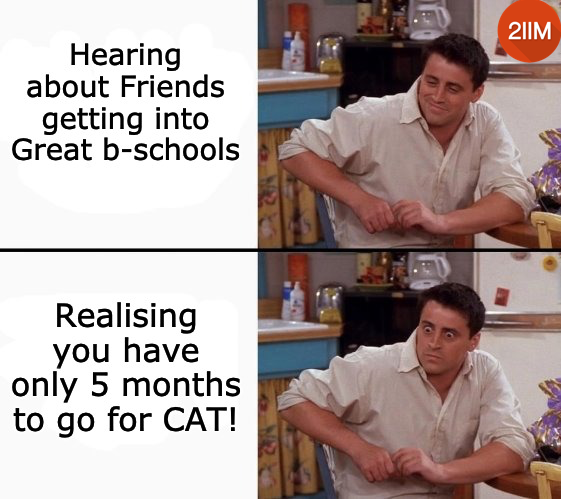CLAT Quantitative Techniques
CLAT Quantitative Techniques section tests candidates on two tenets – Data Interpretation ability, and Mathematical & Computational skills. Data Interpretation requires comprehending data from Line Graphs, Bar Graphs, Pie Charts and the like. Computational skills can be honed with a basic understanding of mathematical concepts like Percentages, Averages, and Ratios and Proportions.
The following questions on CLAT Quantitative Techniques have been curated meticulously, taking into account the latest samples released by the Consortium of NLUs. These questions are pegged exactly at the level of difficulty of CLAT.
Are you game for some number crunching? Take the plunge, and solve the following questions, available for free!
-
Number of females affected by Japanese encephalitis in West Bengal are what percentage (up to 1 decimal) more or less than that of females affected in Odisha?
-
What is the average number of males affected by Japanese encephalitis in all the five states?
-
If the total number of males affected by Japanese Encephalitis in other states are 87 % more than the average number of males in Odisha, West Bengal, Chhattisgarh and Jharkhand, the total number of males affected in India is:
-
By what percentage is the average of males in Chhattisgarh, Jharkhand and Andhra Pradesh together more or less than the average of females in West Bengal, Jharkhand and Odisha together who are affected by Japanese encephalitis?
- 22
- 24
- 26
- 28
-
What is the percentage (up to 1 decimal) of females affected by ‗Japanese encephalitis‘ of the total affected population across five states?
-
What would be the area of the room which is not covered by any object as mentioned above?
-
What is the area of the table which is uncovered by any of the objects?
-
How many tables are required to cover the floor surface of the room completely?
-
If the entire room is to be filled by books having same dimensions as lying on the table then how many books are required.
-
How many chairs can be put inside the room so as to cover the entire floor area of the room?
-
If a triangle is created by joining points A, B, and C. What will be the length of AB?
-
What will be the area of the triangle ABC?
CLAT 2020 Quantitative Techniques: Japanese Encephalitis
The following data presents the cases of Japanese Encephalitis in five states of India

CLAT 2020 Quantitative Techniques: Mensuration
A room having the dimensions as mentioned in the chart below has a table, a bed and a chair. There are three books kept on the table (side by side) and also a lamp having radius, 3.5 inch. Now, on the basis of information given below answer the following?
| Sr.No. | Object | Length | Breadth | Height |
|---|---|---|---|---|
| 1 | Room | 18 feet | 12 feet | 12 feet |
| 2 | Bed | 3.5 feet | 6 feet | 3 feet |
| 3 | Table | 3 feet | 4 feet | 4 feet |
| 4 | Chair | 2 feet | 2.5 feet | 4 feet |
| 5 | Books | 12 inches | 6 inches | 3 inches |
CLAT 2020 Quantitative Techniques: Geometry
In the figure given below, a goat is tied to a pole (at point O) which is the center of the semi -circular plot. The area of the plot is equal to its perimeter. BO is the length of the rope through which the goat is tied to the pole. Answer to the closest decimal.




CAT Coaching in Chennai
CAT 2021
Enroll at 49,000/-
44,000/-
Online Classroom Batches Starting Now!

